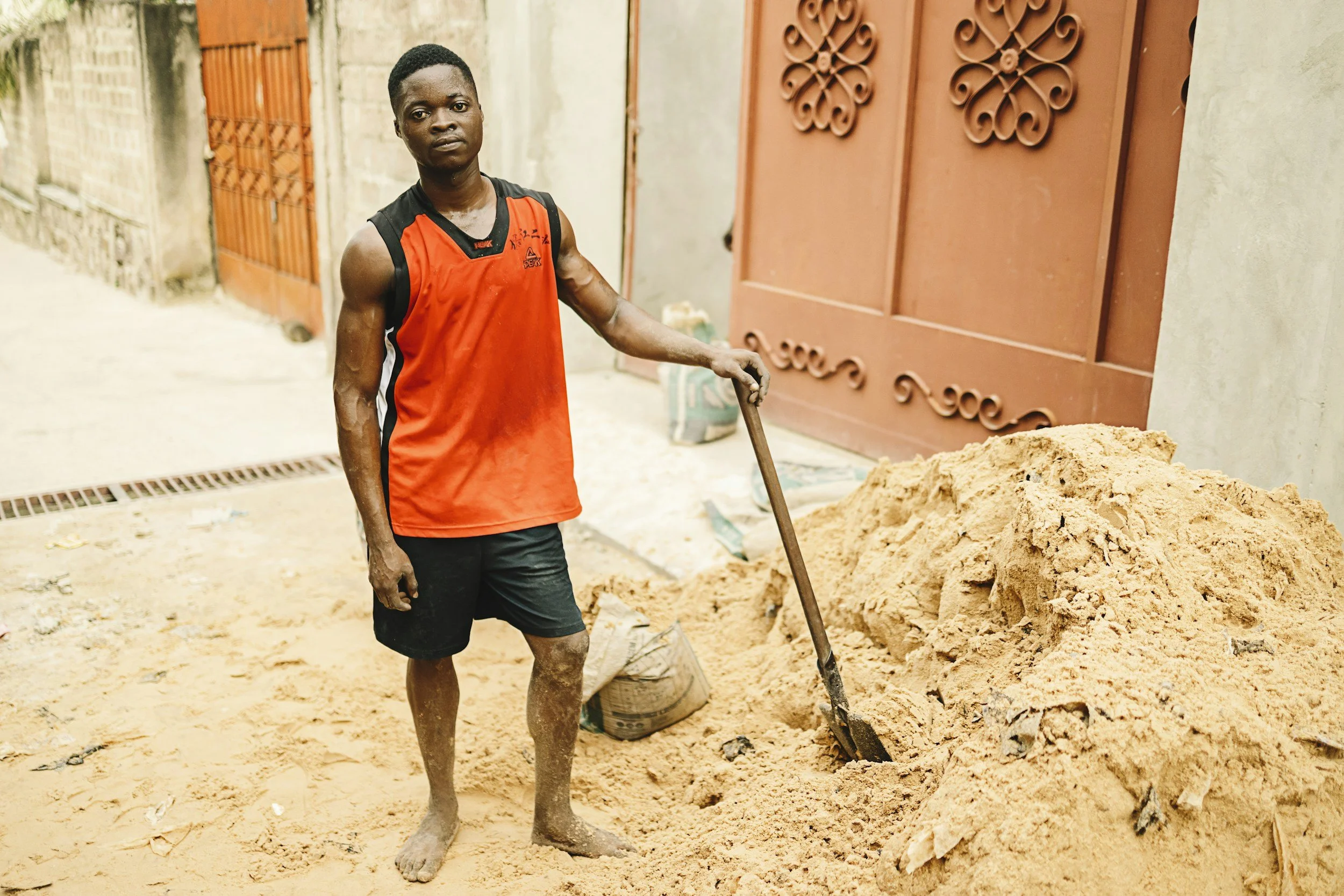From Workplace Injuries to Healthcare Gaps: Understanding the Epidemic of Low Back Pain in South Africa
Morris Kahere, DC, PhD studied chiropractic at Durban University of Technology, followed by a PhD in Public Health Medicine at the University of KwaZulu-Natal in South Africa. In this guest post, he shares his perspective on what his research can tell us about addressing chronic low back pain in South Africa.
How big a problem is low back pain in South Africa?
My research focused on understanding the burden of chronic low back pain (back pain lasting more than 12 weeks) in South Africa, using various methods, including surveys (cross-sectional analyses), cost-of-illness analysis, and systematic reviews. We surveyed 678 adult participants from 5 provincial hospitals in KwaZulu-Natal, South Africa. We found that chronic low back pain affects about 18.1% of adults, with slightly higher rates observed in women (23.9%) than men (19.7%).1 While this difference was not statistically significant, it highlights the need for gender-specific approaches to managing back pain. Alarmingly, this is almost double the reported rate of chronic back pain in some high-income countries.2
Workplace back pain
Occupation-related back pain was prevalent, ranging from 30.1% to 55.5%, particularly among individuals involved in manual labor and sedentary jobs. This highlights the urgent need for workplace interventions, such as implementing and adhering to ergonomic standards, to reduce the risk and prevalence of work-related back pain. It is crucial to monitor and evaluate workplace risk factors continuously. Furthermore, these findings underscore the importance of developing and enforcing policies that mitigate occupational hazards and promote safer workplace practices.
“Chronic low back pain is a pervasive issue in South Africa, with a significant impact on individuals, workplaces, and the healthcare system.”
Risk Factors
The study identified several key modifiable lifestyle risk factors for chronic low back pain, including smoking, drinking alcohol, being overweight, and lack of regular physical exercise. Psychological factors, such as fear-avoidant behaviors related to work, contributed significantly to disability associated with chronic low back pain. These findings emphasize the need for targeted public health campaigns promoting smoking cessation, increased physical activity, and responsible alcohol use to reduce the incidence of chronic low back pain. Additionally, these findings highlight the importance of developing and implementing policies to address behavioral risk factors, thereby creating environments that promote healthier lifestyles and overcome psychological barriers.
Cost of low back pain
Back pain was shown to impose a significant economic burden on South Africa’s healthcare system, with annual costs estimated at $5.4 million.3 Chronic low back pain accounts for approximately 83% of these costs, while acute back pain contributes the remaining 17%. The per-patient costs for chronic and acute low back pain were reported at US$1,516.67 and US$99.43, respectively. Outpatient care represented the largest portion of these expenditures, comprising 38.9% (US$2.10 million), with non-steroidal anti-inflammatory drugs (NSAIDs) alone accounting for 54% (US$1.15 million) of outpatient costs. These findings draw attention to the urgent need for alternative back pain management strategies and greater investment in preventive care initiatives to reduce the economic impact of chronic back pain. Additionally, there is a strong case for policy recommendations that prioritize cost-effective interventions and sustainable healthcare practices.
Limited access to healthcare resources
Access to healthcare for low back pain emerged as a significant issue, with many patients encountering barriers such as the need to travel long distances for care, long waiting times, insufficiently trained personnel, and a fragmented referral system.4 These challenges were particularly acute in rural areas, where pyramidal delays were common. Participants expressed frustration over the lack of skilled personnel at the primary healthcare level, with physiotherapy services available only at tertiary facilities on a referral basis or in private practice. This led to inappropriate interventions at the primary healthcare level, further delaying effective treatment and missing the critical window of opportunity for resolution.
Cultural beliefs that trivialize back pain also contributed to delays in seeking care. These findings highlight the urgent need for systemic improvements, including strengthening referral systems, increasing the availability of skilled personnel, and integrating physiotherapy and or chiropractic services into primary care. Additionally, public educational campaigns that address the importance of timely back pain management and dispel cultural misconceptions are essential to improve early and effective care. Policy recommendations should prioritize these systemic changes to enhance healthcare equity and accessibility.
Summary
Chronic low back pain is a pervasive issue in South Africa, with a significant impact on individuals, workplaces, and the healthcare system. The high prevalence of occupation-related back pain, particularly among manual laborers and sedentary workers, and the doubling of chronicity rates to over 18% compared to previous estimates, underscores the need for urgent and tailored interventions. Moreover, the economic burden in KwaZulu-Natal of $5.4 million annually, driven by outpatient care and chronic pain management, highlights inefficiencies in current treatment models. Barriers to healthcare access, compounded by systemic challenges and cultural misconceptions, further delay effective management and exacerbate the problem.
Addressing the problem
Addressing chronic low back pain requires a multifaceted strategy. Enforcing workplace ergonomic standards and implementing national guidelines focused on cost-effective, evidence-based interventions are critical. Public health campaigns must target modifiable risk factors such as smoking, sedentary behavior, and fear-avoidance, while promoting physical activity and responsible alcohol use.
Strengthening primary healthcare by integrating physiotherapy and chiropractic services, training personnel, and streamlining referrals will improve access and reduce delays. Additionally, educational campaigns should address cultural stigmas to encourage timely care-seeking.
By prioritizing preventive care, enhancing healthcare access, and implementing targeted policies, South Africa can reduce the prevalence and economic burden of low back pain while improving outcomes for patients.
References
-
Kahere, M. (2021). The prevalence and risk factors of chronic low back pain among adults in KwaZulu-Natal, South Africa: An observational cross-sectional hospital-based study. BMC Musculoskeletal Disorders, 22(955), 10. ↩︎
-
Freburger JK, Holmes GM, Agans RP, et al. The Rising Prevalence of Chronic Low Back Pain. Arch Intern Med. 2009;169(3):251–258. ↩︎
-
Kahere, M., Ngcamphalala, C., Östensson, E., & Ginindza, T. (2022). The economic burden of low back pain in KwaZulu-Natal, South Africa: A prevalence-based cost-of-illness analysis from the healthcare provider’s perspective. PLoS ONE, 17(10), e0263204. ↩︎
-
Kahere, M., Hlongwana, K. and Ginindza, T., 2022. Exploring patients’ lived experience on the barriers to accessing low back pain health services. African Journal of Primary Health Care & Family Medicine, 14(1), pp.1–10. ↩︎
-
Kahere, M. (2021). The prevalence and risk factors of chronic low back pain among adults in KwaZulu-Natal, South Africa: An observational cross-sectional hospital-based study. BMC Musculoskeletal Disorders, 22(955), 10. ↩︎
-
Freburger JK, Holmes GM, Agans RP, et al. The Rising Prevalence of Chronic Low Back Pain. Arch Intern Med. 2009;169(3):251–258. ↩︎
-
Kahere, M., Ngcamphalala, C., Östensson, E., & Ginindza, T. (2022). The economic burden of low back pain in KwaZulu-Natal, South Africa: A prevalence-based cost-of-illness analysis from the healthcare provider’s perspective. PLoS ONE, 17(10), e0263204. ↩︎
-
Kahere, M., Hlongwana, K. and Ginindza, T., 2022. Exploring patients’ lived experience on the barriers to accessing low back pain health services. African Journal of Primary Health Care & Family Medicine, 14(1), pp.1–10. ↩︎






